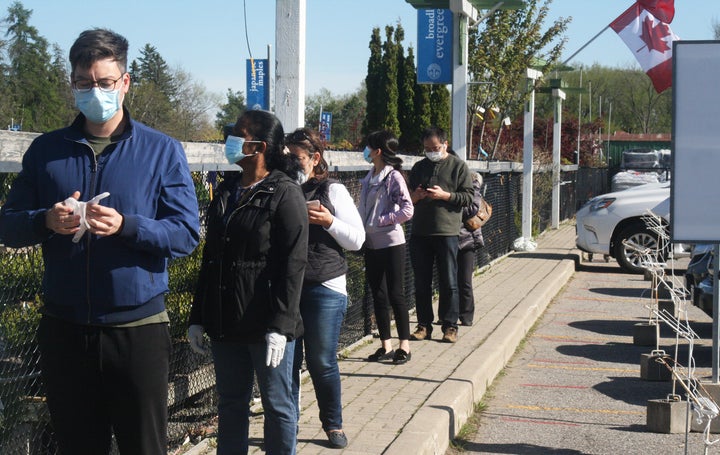
A mandate to wear face masks in public could be a partial “substitute” for future COVID-19 lockdowns, sparing the economy billions of dollars in damage, researchers at investment bank Goldman Sachs say.
By comparing COVID-19 data from 125 countries, and by comparing U.S. counties with and without face mask mandates, the researchers concluded that a government order to wear face masks in public could cut the virus’s infection rate by nearly 60 per cent, and reduce fatalities by nearly half.
To achieve the same result using lockdowns, the government would have to shut down enough activity to cause the economy to shrink 5 per cent, researchers Jan Hatzius, Isabella Rosenberg and Daan Struyven wrote.
Watch: How to make a medical face mask at home, according to the CDC. Story continues below.
“We find that face masks are associated with significantly better coronavirus outcomes,” they wrote, and this “seems to reflect a largely causal impact of masks rather than correlation with other factors (such as reduced mobility or avoidance of large gatherings).”
Looking at the U.S., the researchers found “face mask usage is highest in the Northeast, where the virus situation has improved dramatically in recent months, and generally lower in the South, where the numbers have deteriorated.
“For example, only about 40 per cent of respondents in Arizona say that they ‘always’ wear face masks in public, compared with nearly 80 per cent in Massachusetts.”
The report noted that an “abrupt shift has occurred in the official view on face masks,” noting that the World Health Organization said as recently as March that there is “no specific evidence to suggest that the wearing of masks by the mass population has any potential benefit.”
But the success of countries with a face mask mandate in fighting the coronavirus has changed perceptions.
In Canada, health authorities initially described face masks as “counterproductive,” but by April had acknowledged new research showing their effectiveness in preventing the spread of COVID-19.
Face mask rules proliferate
Now, provincial and municipal governments one-by-one are implementing face mask rules.
The City of Toronto announced Tuesday that face masks will be mandatory in all indoor public spaces. The province of Quebec has decreed that face masks must be worn on public transit. Other provinces and cities are looking at following suit.
However, some jurisdictions are balking at making face masks mandatory, because not everyone can safely wear them.
People who suffer from asthma may have trouble breathing in face masks, while people who suffer from sensory perception challenges, such as the hard of hearing and autistic persons, may also struggle with face masks.
The Goldman Sachs report found that government orders are fairly effective in getting people to wear face masks, increasing usage by about 15 percentage points.
Recent surveys suggest Canada is closer to the low end of public face mask usage, with a recent Leger survey showing 48 per cent of Canadians have used face masks in public. In East Asia, which has largely avoided large-scale outbreaks, and in Southern Europe, where cases have rapidly dropped off, that percentage is in the 80s and 90s, the Goldman Sachs researchers noted.